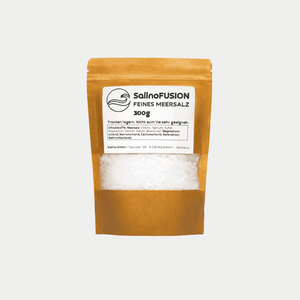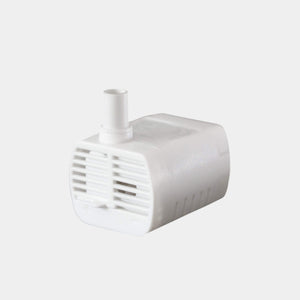When your skin burns, school is stressful and breathing becomes difficult
 There's that moment in life when everything seems to change at once. Your voice breaks mid-sentence. Your face reflects the chaos of hormones. And suddenly the classroom becomes a place where all concentration is lost as if through a fog. Puberty – that single word that carries with it so much uncertainty, energy, and silent struggle. For teenagers, it means not only physical growth but also the constant attempt to re-evaluate themselves. And for parents? It's often a silent empathy, an observation from the outside while your own child staggers between pimples, school stress, and self-doubt.
There's that moment in life when everything seems to change at once. Your voice breaks mid-sentence. Your face reflects the chaos of hormones. And suddenly the classroom becomes a place where all concentration is lost as if through a fog. Puberty – that single word that carries with it so much uncertainty, energy, and silent struggle. For teenagers, it means not only physical growth but also the constant attempt to re-evaluate themselves. And for parents? It's often a silent empathy, an observation from the outside while your own child staggers between pimples, school stress, and self-doubt.
Amidst all this, the solution sometimes seems surprisingly simple: fresh air. But not just any air – salty air. The kind you feel on the coast, the kind that fills your lungs, tastes salty on your face, and soothes your soul. What was once only associated with a vacation on the North Sea or a spa treatment in Bad Reichenhall is now being increasingly researched – and rethought. More and more studies indicate that salty air does more than just smell good. It affects the skin, the respiratory system, even concentration – precisely where teenagers struggle most during this sensitive phase of life.
So what if a touch of the sea could provide not just relaxation, but real relief? For clearer skin. For easier breathing. For a calmer mind in the chaos of the classroom.
In the next sections, we'll explore three key ways salt air can help young people through these turbulent times: with acne, stress, and learning difficulties. Without offering miracle cures, but with an honest look at what's possible—scientifically sound and realistic.
When the face becomes a stage: salt air and the drama of teenage skin
Mirrors are merciless. Especially in the morning. When the sun streams through the blinds and every pore, every new pimple, becomes the star of the drama of puberty. Teenage skin has its own rhythm – and rarely the one you want. Sebaceous glands in constant operation, clogged pores, redness, inflammation. What helps? Many things are tried: creams, cleansers, tea tree oil, zinc ointment. But the skin often reacts like a stubborn child – sometimes not at all, sometimes with new irritations.
What many people don't know is that the air we breathe can also affect our skin . And salty air—like that found near the sea or in special salt inhalation rooms—has an unexpected effect here.
The salty cleansing from inside and out
Salt is hygroscopic, meaning it attracts moisture. This effect is used in skincare to bind excess sebum and gently unclog pores. At the same time, salty air has a mild antiseptic effect—a natural antagonist to bacteria that can cause pimples. Studies on salty aerosols show that they have anti-inflammatory properties and can strengthen the skin barrier.
In addition, salt air also supports the skin's natural pH balance. Unlike aggressive cleansers, which often remove too much oil and only further stimulate sebum production, salt air has a regulating effect – without irritating.
Salt therapy for acne: No miracle, but a help
Of course, salt air is no substitute for dermatological treatment for severe acne. But it can be a complementary treatment. Gentle, consistent, and without side effects. Young people who regularly breathe in sea air or spend time in salt rooms report improved skin texture, less inflammation, and a calmer complexion.
It's not just about the salt itself, but also about the setting. Those who spend time in salty air often escape from everyday life—school, pressure, and reflection in the mirror. And it's precisely these little islands of relaxation and healthy air that can help break the vicious cycle of stress and skin problems.
When everything gets too much: How salty air can give teenagers inner peace
 Puberty is a paradoxical chapter. Everything is growing – and at the same time, so much is collapsing. Self-image, patience, sometimes the world itself. What appears outwardly as defiance or indifference is often a storm of excessive demands on the inside. School becomes a stress factor, expectations rise, the body changes, and social comparisons dominate. And in the midst of this chaos, young people are expected to function – at school, with their family, and with their friends. It's no wonder that many teenagers are under constant stress.
Puberty is a paradoxical chapter. Everything is growing – and at the same time, so much is collapsing. Self-image, patience, sometimes the world itself. What appears outwardly as defiance or indifference is often a storm of excessive demands on the inside. School becomes a stress factor, expectations rise, the body changes, and social comparisons dominate. And in the midst of this chaos, young people are expected to function – at school, with their family, and with their friends. It's no wonder that many teenagers are under constant stress.
Stress begins in the head – and ends in the body
Chronic stress in adolescence is not without consequences. It can lead to sleep disturbances, impair concentration, weaken the immune system, and—as many dermatologists confirm—even exacerbate skin problems like acne. A vicious cycle that's difficult to break as long as the nervous system remains in alert mode.
This is where an often underestimated factor comes into play: breathing . It's the only function of the autonomic nervous system that we can consciously influence. And this is precisely where salty air works – quietly but profoundly.
Sea air for the nervous system
Anyone who has ever stood on the coast and taken a deep breath knows the feeling: the body relaxes. The mind becomes clearer. Thoughts quieter. Studies show that the high humidity and the magnesium contained in salt can have a calming effect on the central nervous system. Halotherapy —the controlled inhalation of salty air—is therefore used specifically in rehabilitation clinics and relaxation centers, including for children and adolescents.
In a world where even relaxation is often mediated by screens, exposure to salty air acts like a reset button. Not a digital detox, but a neurophysiological one. Teenagers, in particular, whose emotions often go on a rollercoaster, can benefit from this silent regulation – without them having to "do anything" for it.
Peace that doesn’t attract attention – but works
A side effect, as evidenced by reports, is that adolescents who are regularly exposed to salt air sleep more deeply. They wake up more refreshed. And they report a subtle but noticeable feeling of inner balance – especially during periods of high school or exam stress. Not a miracle cure, but a gentle companion through times of inner turmoil.
Between math formulas and breathing breaks: How salt air helps teenagers learn
 Concentration isn't something you can take for granted. Especially not in a teenage body that's simultaneously battling hormonal surges, mood swings, and sleep deprivation. Even simple math problems can become a cognitive climb when the brain is under-stimulated, tired, or distracted. Many adolescents describe this feeling as "cotton wool in the head"—a diffuse, foggy feeling that makes clear thinking impossible.
Concentration isn't something you can take for granted. Especially not in a teenage body that's simultaneously battling hormonal surges, mood swings, and sleep deprivation. Even simple math problems can become a cognitive climb when the brain is under-stimulated, tired, or distracted. Many adolescents describe this feeling as "cotton wool in the head"—a diffuse, foggy feeling that makes clear thinking impossible.
Often, it's not laziness at all. It's a physiological reaction to too little oxygen, to stress, to too much stimuli. The good news: This is precisely where the right environment can make a difference. And salty air is more than just a wellness luxury—it can actually improve learning ability .
More oxygen, more focus
Salty air contains extremely fine aerosols that penetrate deep into the lungs. Unlike dry, heated air, which irritates the mucous membranes and makes breathing difficult, salty air creates moist, well-perfused airways. This means gas exchange in the lungs is more efficient, and more oxygen reaches the bloodstream—and thus also the brain.
This may sound technical, but the effect is immediately noticeable: Those who breathe better think more clearly. Especially during periods of learning—before exams, while doing homework , during morning classes—an environment with salty air can help you stay more mentally present.
Salt inhalation: Not just for the lungs, also for learning
In several pilot studies from Eastern Europe, where salt caves have long been used therapeutically, students report improved concentration and reduced mental fatigue after regular halotherapy sessions. Teachers also note that children with allergies or mild respiratory problems are more alert in class after spending time in salty air beforehand.
And even though large-scale studies are still lacking, the empirical evidence is promising. Particularly interesting is that the effect isn't limited to adolescents with asthma or chronic illnesses—healthy teenagers also seem to benefit. Not by "more," but by "less": less sensory overload, less respiratory resistance, less inner restlessness.
Conclusion: Salt air – a silent ally in stormy years
Puberty isn't an illness. But sometimes it feels like one. When everything changes—your body, your skin, your mind, your self-image—you don't need major therapies, but rather small, honest relief. And sometimes this relief comes from an unexpected source: the air we breathe.
Salty air doesn't promise a cure. But it is a space where calm can develop. For the skin, which finally no longer constantly burns. For the nervous system, which can breathe. For the brain, which can refocus. And for the child within the teenager, who doesn't have to be perfect to grow.
What was once reserved for vacations—the salty wind on the coast, the liberating breath of the sea—can now be integrated into everyday life. More and more families are looking for ways to make these quiet benefits available to their children—not as a substitute for medical care, but as a gentle addition to everyday life.
A touch of the sea in the children's room?
For anyone who wants to experience this effect regardless of the weather or where they live, there are now compact solutions that generate salty air where it's needed—for example, in the bedroom or at the study area. One of these options is the so-called mini-saline , a small device that releases the finest aerosols into the room through the evaporation of highly concentrated salt. No noise, no effort, no filter changes. It's simply there—like the sea nearby.
Whether this is the right addition for each child can only be decided individually. But perhaps it's exactly what puberty sometimes needs: quiet support that doesn't judge, doesn't pressure—but simply lets them breathe.



